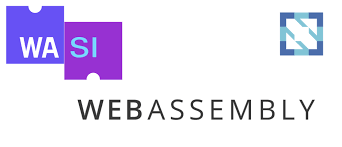CNCF Zero-To-Merge: Becoming a Contributor(PART II)
 Mfon
Mfon
It has been 2 weeks since I joined the CNCF Zero-To-Merge Incubator Program and I’d say joining it was the best decision I made recently.
Disclaimer, This was not my first attempt at contributing to a Cloud-Native Project but in previous times, I always got overwhelmed by the amount of strange words and complexities surrounding projects that I always gave up.
This experience has been different because I have a community. A community of people just like me, asking the same questions I am asking and facing the same hurdles I as I am.
IMPACT OF THE CLASSES
The classes have helped me understand the breakdown and the landscape of CNCF Communities.
A thing I learned that confirmed my recent observation was that most companies are switching to a multi-cloud situation. This means you can find a company using AWS, DigitalOcean, Azure and On-Premise Cloud Solutions at the same time.
I observed this with the company I currently work for, We use AWS, and Digital Ocean and are migrating to On-Premise to have a hybrid Cloud-Solution. Also, some of the data we have are on Azure so I know at some point, I have to learn that too.
This brings me to the next point discussed in the Class, Cloud Financial Management or FinOps.
As a DevOps Engineer, at some point, we have all had to defend the costs our cloud solutions bring or have been asked to manage them. It is interesting to see that this is becoming a field on its own.
A cool thing I learned was Github Codespaces.
I have been hearing about it for a while but I have never used it. Go to any repository on GitHub and on your keyboard, press a full-stop . It would immediately open an IDE like VScode where you can start coding.

How cool is that?
P.S. I am about to bother everyone I know with this knowledge.
WASM + WASI
I just left the rabbit hole of WASM which is web assembly and it uses a sandbox to use other programming languages apart from JavaScript like Java to build Front-End Web Applications. Where the main execution virtual machine is not JavaScript based.
It is portable across different cloud environments, building applications that can run anywhere and on any cloud service.
I found this quite interesting as it can be compared with Docker, Kubernetes or even Terraform.
I joined the WASICloud Community and I hope to learn more by showing up and sticking around ;)
This article helped me understand the terminology surrounding it: https://www.fermyon.com/blog/wasm-wasi-wagi
TIPS FOR CONTRIBUTING TO OPEN SOURCE PROJECTS
I have learned that to be a long-term contributor, you pick the contribution by the project instead of the issue.
This means:
Select a Project you find interesting, this would make you stick around longer
Select a Project with an active Community, alternatively, you can make the community active.
Select a Project with good Documentation, alternatively, you can make the documentation good.
These are the things I have noticed work for me that you can apply.
Subscribe to my newsletter
Read articles from Mfon directly inside your inbox. Subscribe to the newsletter, and don't miss out.
Written by

Mfon
Mfon
I am a DevOps Engineer, I enjoy writing about tools I use. Interested in Open Source | Open Science Projects.